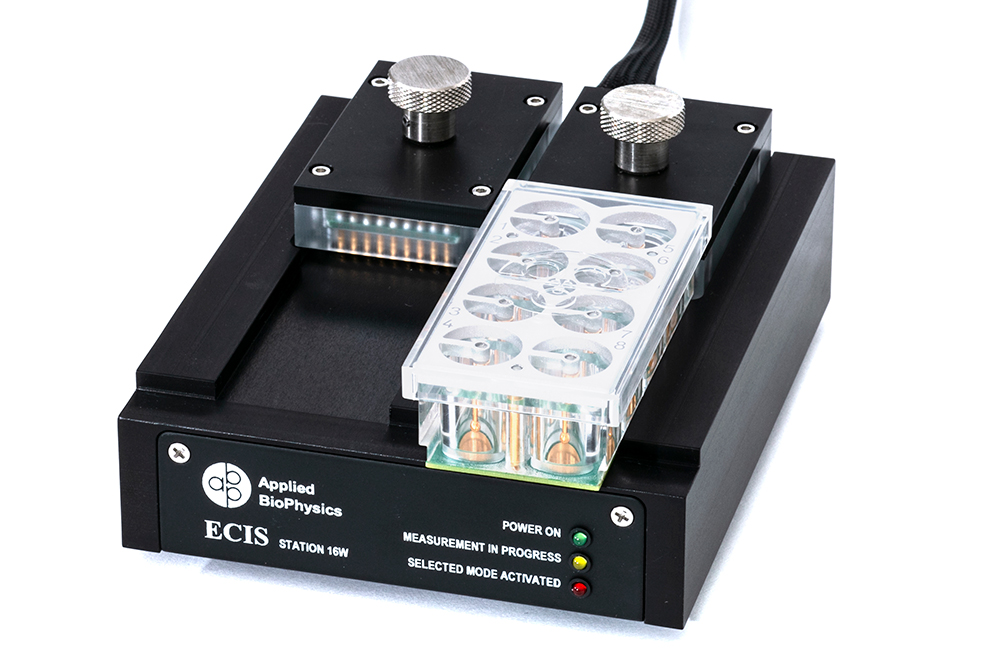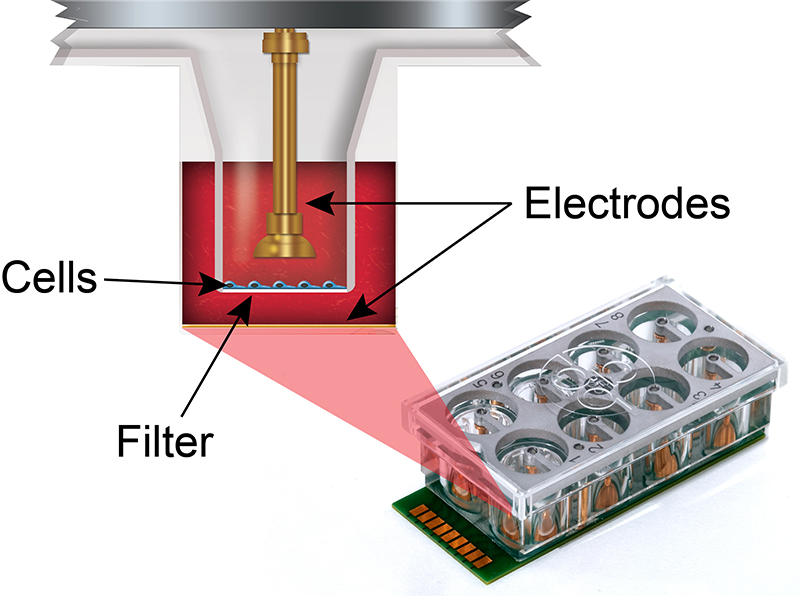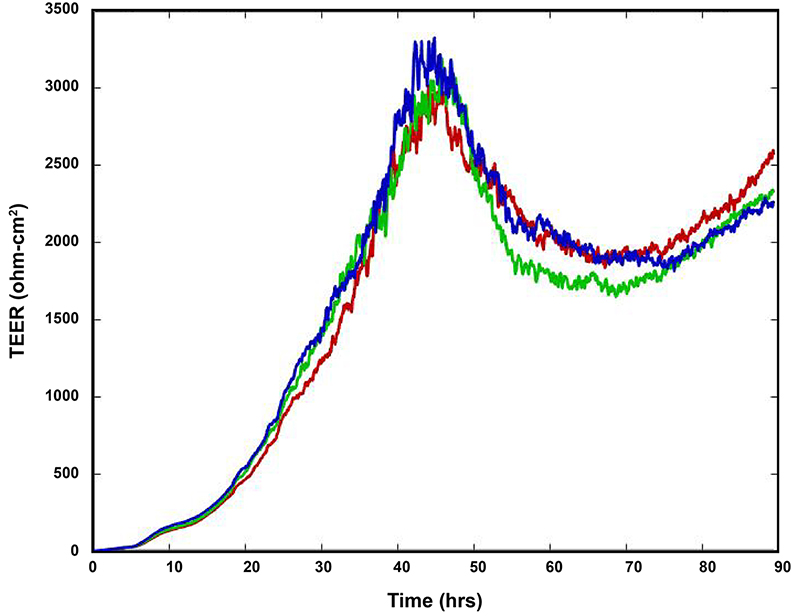Trans-epithelial/endothelial electrical resistance (TEER) is an extremely useful method for studying in vitro barrier integrity. Applied BioPhysics offers TEER technology to be used with ECIS® instrumentation to provide continuous barrier resistance measurements in real-time while under incubated conditions, all the while being completely non-invasive to the cell layer.
When epithelial and endothelial cells grow into monolayers, barriers are formed by various junctional proteins to regulate the passage of certain molecules. When these barriers are compromised, diseases and inflammation can arise. Many in vitro methods used to study molecular transport across these barrier layers remain very subjective in nature. TEER is a unique way to non-invasively quantify barrier function of cell monolayers, and when coupled with ECIS® instrumentation, the measurements can be carried out continuously in real-time under incubated conditions.

TEER measurements are conducted by sending weak AC signals from the base of a special ECIS well, through a cell monolayer on a transwell filters insert, to a dipping electrode above the filter to complete the circuit. From this, the electrical resistance of the barriers is measured and, when multiplied by the filter area, gives the intrinsic TEER value of the monolayer in ohm-cm2.
TEER filter measurements are especially relevant due to the in vivo-like nature that is produced by culturing cells on porous supports. This allows the cells to be fed by culture medium from both the apical and basal side often resulting in a polarized cell layer. Since the AC signal that is used to detect the barrier resistance of the cell monolayers is very weak, the cells experience no invasive effects from the electrical current.
Monitoring cell barriers upon membrane filter inserts with ECIS® Electrode arrays

When measuring TEER with ECIS instrumentation, data is collected continuously in real-time while the cells remain incubated. The following graph shows the progression of TEER of MDCK I cells being monitored from the point of seeding to a fully confluent monolayer.

To view publications in TEER please visit our publications page
© 2025 Applied BioPhysics, Inc.
185 Jordan
Road Troy, NY 12180 / Phone: 518-880-6860 / Toll Free: 866-301-ECIS (3247) / Fax: 518-880-6865